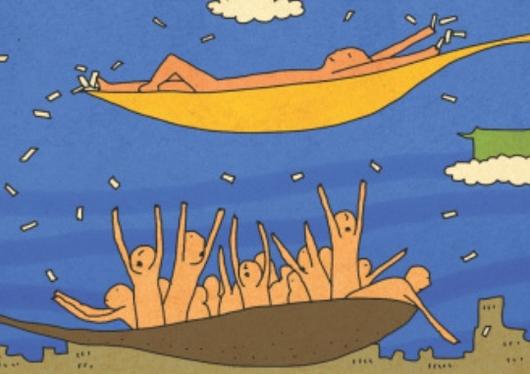 |
According to the Programme for International Student Assessment (PISA), conducted every three years by the Organization for Economic Cooperation and Development (OECD), South Korean students were among the top in their performance in reading, mathematics, and science.
The percentage of students who fell below the basic academic standard was three times higher among the students from poor families than those from rich families.
According to the PISA results of 2018 released by the Ministry of Education on December 3, of the 37 OECD member states, South Korean students ranked 2-7 in reading, 1-4 in math, and 3-5 in science. The PISA ranking is determined by estimating the average scores of each country, so it is presented in a range from the highest to the lowest ranking.
In the 2015 PISA survey, South Korea ranked 3-8 in reading, 1-3 in math and 3-5 in science. An official from the education ministry said, “Compared to three years ago, South Korean students’ academic proficiency in math and science improved, while the academic proficiency of students from OECD member states fell,” and added, “Overall, we can say that our academic levels improved compared to three years ago.” Among the OECD countries, Estonia topped the list in reading and science, ranking 1-4, and Japan (1-3) ranked highest in math.
About 710,000 students aged fifteen or older from 79 countries including non-OECD member states took part in the latest survey. When we compare South Korean students with students from all 79 countries that took part in the survey, they ranked 6-11 in reading, 5-9 in math, and 6-10 in science. China, Singapore, Hong Kong and Macao (China) ranked higher than South Korea in the overall ranking.
The gap in education due to the parent’s economic, social, cultural status (ESCS) was lower in South Korea than the OECD average. However, the percentage of students falling behind the basic academic standard increased the poorer the students.
Among the poor students who belonged to the bottom 25% of the ESCS scale, 24.2% of students fell below the academic standard, 3.4 times the rate among the rich top 25% (7.1%). This gap was bigger than in countries with similar academic levels, such as Estonia (2.7), Japan (2.89), and Finland (3.2).
An comparison of the reading proficiency of schools in each region and of students in the same school showed that the gap in South Korea was wider than the OECD average. The gap between students was 77.2, while the OECD average was 71.2, and the difference between schools was 30.7, also bigger than the OECD average of 28.6.
As for the student’s life-satisfaction, South Korea was 6.52 (10 being the highest score), lower than the OECD average (7.05).
▶ 장도리 | 그림마당 보기
▶ 경향신문 최신기사
▶ 기사 제보하기
©경향신문(www.khan.co.kr), 무단전재 및 재배포 금지
이 기사의 카테고리는 언론사의 분류를 따릅니다.
기사가 속한 카테고리는 언론사가 분류합니다.
언론사는 한 기사를 두 개 이상의 카테고리로 분류할 수 있습니다.
언론사는 한 기사를 두 개 이상의 카테고리로 분류할 수 있습니다.


